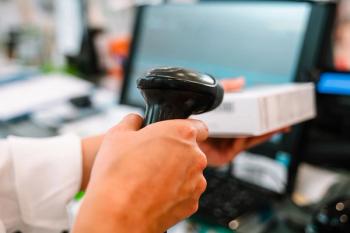
- Pharmaceutical Technology-01-02-2008
- Volume 32
- Issue 1
Custom Synthesis of APIs
Researchers and process chemists share approaches in synthesis of active ingredients and pharmaceutical intermediates.
As contract manufacturers and pharmaceutical companies gather later this month for Informex in New Orleans, discussions of approaches for the synthesis of active pharmaceutical ingredients (APIs) and intermediates will invariably ensue. A review of several sources, including contract manufacturers, academicians, and recent literature reveals several interesting approaches in API synthesis.
PHOTOS.COM/M.MCEVOY, Structures courtesy of US FOOD AND DRUG ADMINISTRATION
Nucleoside analogs
Nucleoside analogs have provided a rich structural class for the design of novel anticancer and antiviral drugs. "Leustatin" (cladribine) by
Clofarabine (see Figure 1) is the API in "Clolar," an anticancer therapy developed by Ilex Oncology (San Antonio, TX). Ilex was acquired by
Figure 1 ALL Figures Courtesy of US Food and Drug Administration
Clofarabine is a second-generation adenosine-related antimetabolite. The original synthesis of clofarabine involved chromatography and was not adequately cost-effective or scalable. The task for improving the synthesis was to develop a new process that would avoid chromatography, produce a drug substance of high purity, and improve the cost-effectiveness of the manufacturing process (2).
Workers at Ilex Oncology (now part of
Lipoxins
Early this year, the
Lipoxins were first isolated in the 1980s. These molecules appear at the site of inflammation, leading researchers to believe that they are involved in the process and thus may have potential therapeutic applications. Some of the beneficial action ascribed to aspirin is now believed to be due to the formation of lipoxins. Both Lipoxin A4 and Lipoxin B4 have been detected in a variety of inflammatory conditions.
"Lipoxins have been shown to promote phagocytosis of the neutrophils," said Pat Guiry, professor of organic chemistry at the UCD School of Chemistry and Chemical Biology, in an April 2007 press release. Reducing the number of neutrophils reduces the inflammation. "However the therapeutic potential of lipoxins is limited by reactions with enzymes in our bodies which break them down."
Guiry's research group synthesized novel lipoxin-based molecules. The belief was that an analog could be synthesized with the potency of the lipoxins, but with improved chemical stability. "The challenge is to protect the molecules from the enzymes without altering their biological activity," he explained.
With this goal, the group identified the region of the molecule essential for its biological function and tailored the nonessential region to make it evade enzymatic degradation. The strategy was that the novel molecules would retain the functions of Lipoxin A4 and Lipoxin B4, while the metabolic reactions that break the molecule down would be blocked, according to the release.
The research team used Sharpless epoxidation, Heck coupling, and diastereoselective reduction to synthesize a new set of lipoxin analogs. The analogs maintained the active carboxyl and hydroxy region of the lipoxins, but contain an aromatic ring in the part responsible for the metabolic activity (3, 4).
Biological testing of the lipoxin analogs was promising. "The Lipoxin A4 analog shows a significant increase of phagocytosis, comparable with the naturally occurring lipoxin, while the lipoxin B4 analog also stimulates phagocytosis," said Guiry.
Further modification may increase the potency of the analogs by blocking other metabolic pathways. "Work is underway on the synthesis of other analogs and their subsequent biological evaluation. "Several chronic inflammatory conditions may be amenable to therapeutic intervention by stable synthetic lipoxin analogs," he said.
Bayer Schering Pharma (Berlin, Germany), for example, has a lipoxin molecule in early-stage clinical development to treat inflammatory bowel disease.
Antibiotics
Earlier this year, researchers at the
Qian Cheng and Bradley Moore of Scripps were able to synthesize an antibiotic that is naturally produced by a Hawaiian sea-sediment bacterium, according to a September 2007 press release. Specifically, the researchers reported the multienzyme total synthesis of the Streptomyces maritimus enterocin and Wailupemycin bacteriostatic agents in a single reaction vessel from benzoate and malonate substrates. The researchers believe that their results represent the first in vitro assembly of a complete Type II polyketide synthase enzymatic pathway to synthesize natural products (5).
"This study may signal the start of a new era in how drugs are synthesized," said Moore, a professor in the Center for Marine Biotechnology and Biomedicine at Scripps. "Assembling all the enzymes together in a single reaction vessel is a different way to make a complex molecule."
The antibiotic synthesized, enterocin, was assembled in approximately two hours. Such a compound would normally take months if not a year to prepare chemically, according to Moore.
Asymmetric synthesis
Asymmetric chemocatalytic methods, such as asymmetric hydrogenation, is an important tool to synthesize single enantiomer compounds. There are in excess of 3000 ligands known for asymmetric hydrogenation processes, although only a portion are truly available on a kilogram scale within a reasonable time frame (6). Several drugs recently approved by FDA are reported to use asymmetric hydrogenation in their manufacture. These include "Rozerem" (ramelteon) and "Aptivus" (tipranavir), both approved in 2005, "Januvia" (sitagliptin), approved in 2006, and "Tekturna" (aliskiren), approved in 2007 (6).
Figure 2 ALL Figures Courtesy of US Food and Drug Administration
Specifically, Merck discovered that hydrogenation of unprotected enamines using rhodium salts of a ferrocenyl-based ligand as the catalyst produces β-amino acid derivatives of high optical purity and yield. Merck applied the method in the final synthetic step. The dehydro precursor to sitagliptin used in the asymmetric hydrogenation is prepared in a one-pot procedure. Following hydrogenation, Merck recovers and recycles over 95% of the rhodium. The reactive amino group of sitagliptin is only revealed in the final step, and therefore there is no need for protecting groups. The new synthesis has only three steps, increasing the overall yield by nearly 50%, and reducing the amount of waste by 80% (7).
Asymmetric hydroformylation is another approach in producing single-enantiomer compounds. Hydroformylation can produce synthetically useful aldehydes in atom economical transformations using readily available alkenes, dihydrogen, and carbon monoxide, but generally, enantioselective hydroformylation has not been well developed. The development of new chiral ligands to produce catalysts with high activity and selectivity, however, is changing this situation (8).
A case in point is work being done at the
References
1. P.L. Bonate et al.,"Discovery and Development of Clofarabine: A Nucleoside Analog for Treating Cancer," Nat. Rev. Drug Discov. 5 (10), 855–863 (2006).
2. W.L. Bauta et al., "A New Process for Antineoplastic Agent Clofarabine," Org. Process Res. Dev. 8 (6) 889–896 (2004).
3. "Lipoxin Analogs With Improved Performance," Chem. & Eng. News 85 (46), 45 (2007).
4 P. Guiry et al., "Aromatic Lipoxin A4 and Lipoxin B4 Analogues Display Potent Biological Activities," J. Med. Chem. 50 (24), 5894–5902 (2007).
5. Q. Chen et al., "Enzymatic Total Synthesis of Enterocin Polyketides," Nat. Chem. Biol. 3 (9), 557–558 (2007).
6. I.C. Lennon, N.B. Johnson, and P. Moran, "Manufacture of Asymmetric Catalysts" Pharm. Technol. 31 Pharmaceutical Ingredients suppl., s6–s13 (2007).
7. P. Van Arnum, "Optimizing Strategies for API Synthesis and Formulation Development," Pharm. Technol. 30 (11), 44–48 (2006).
8 P. Van Arnum, "Advances in Asymmetric Synthesis," Pharm. Technol. 31 (9), 58–65 (2007).
Articles in this issue
almost 18 years ago
Report from: India, January 2008almost 18 years ago
Pharmaceutical and Biopharmaceutical Manufacturing Advances in Irelandalmost 18 years ago
Singapore Attracts Pharmaceutical Manufacturing Investmentalmost 18 years ago
Coming Down the Pike: hES cellsalmost 18 years ago
Setting Cleaning Validation Acceptance Limits for Topical Formulationsalmost 18 years ago
How to Meet Regulatory Challenges in the New Yearalmost 18 years ago
Manufacturing Investment in Puerto Ricoalmost 18 years ago
Candidate CopoutNewsletter
Get the essential updates shaping the future of pharma manufacturing and compliance—subscribe today to Pharmaceutical Technology and never miss a breakthrough.




